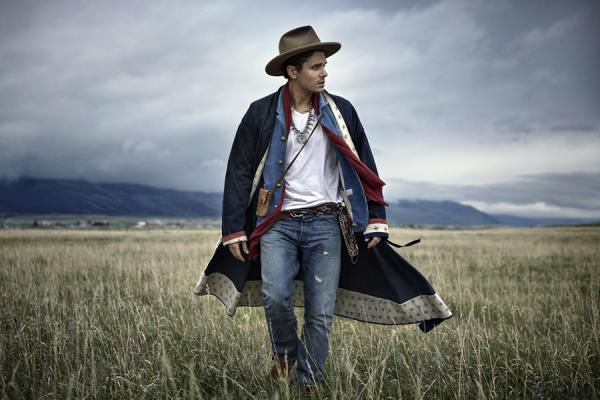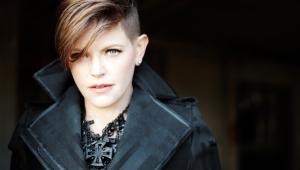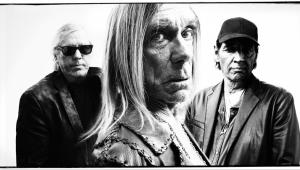This Week in Music, August 20, 2013: Enjoying John Mayer’s lighter things

John Mayer: Paradise Valley
New release (Columbia; tour dates)
Photo by Sam Jones
John Mayer takes another journey into the Americana he explored on last year’s Born and Raised. No wonder. Paradise Valley is named for an area not far from his home in Montana, a refuge that obviously gives him great peace, inspiring him to create music that’s closer to the land. And in further evidence that Mayer has turned a new leaf after the hiatus that was necessitated by his throat surgery and his sometimes out-of-control verbal and physical behavior, this new album is all about understatement.
Examples abound. Girlfriend Katy Perry takes the second verse of “Who You Love,” but she keeps her white-hot light under some sagebrush, in service of the song. Ex-girlfriend Taylor Swift is ostensibly the subject of “Paper Doll” (an apparent answer to Swift’s “Dear John”), but the song comes across softly with a mild, almost sympathetic assessment (“You’re like 22 girls in one / And none of them know what they’re running from”). On the longer of the two tracks called “Wildfire,” Mayer doesn’t take a guitar solo until the end, and then it’s supremely light-touched, as if it’s a stone skipping across a stream. And in the album’s only real nod to his bluesy style of old, a cover of J.J. Cale’s “Call Me the Breeze,” Mayer forgoes the bluster of Lynyrd’s Skynyrd’s familiar version and instead blows cool and smooth, even allowing his choppy concluding solo to be cut short.
Elsewhere, “Badge and Gun” isn’t a threat but an expression of wanderlust via acoustic guitar. “Dear Marie” takes the same subtle tack until it reaches a rocking vista — into the great wide open indeed, relishing the view instead of revving any engines. Throughout the album, Mayer dispenses with lead-guitar pyrotechnics in favor of relatively simple riffs, lines, and harmonies. At the same time, co-producer Don Was dismisses his own heavier-handed tendencies, allowing the material’s pastoral sonics to fill the air.
The lyrics are as contemplative as the music, with Mayer at his best in the bridges of the pure-country “You’re No One ’Til Someone Lets You Down”:
Yes, I’ve been told
That some people grow old
Without losing a part of their soul
But if that is true
I don’t wish it on you
There’s so much to adore in a heart that is blue . . .
Yes, I have heard
There are some who avoid
All the pain that will come with the fall
But if that’s the case
It would surely erase
All the joy that you feel when the hurt fades away
In the end, the sound of Paradise Valley is infinitely more natural than that of Mayer’s old reputation, which, with any luck, this album will help put to rest.

Laura Veirs: Warp and Weft
New release (Raven Marching Band; tour dates)
Photo by Alicia J. Rose
As we approach the beginning of autumn, let us first return with Laura Veirs to the dawn of spring:
First rays of light are comin’ through
Been several months since I saw that much blue
Water rush in the banks
Freed from the ice, it has the sun to thank
Entering with an acoustic hush, “Sun Song” blossoms with strings and plugged-in things, deftly engineered/produced by Tucker Martine. It’s a bucolic opening for the ninth studio album by this appealing singer/songwriter.
The tranquility is broken in the very next song, however, as “America” addresses gun violence:
How can it be so cold out here in America?
Everybody’s packing heat in America
Draining their barrels on the city streets of America
As Veirs explains in a press release for Warp and Weft, which takes its name from a weaving term: “I think of this record as a tapestry, where disparate elements come together and are stronger and more lovely as a result.” Strong and lovely, yes: This album is a mostly delicate affair that nonetheless seems to have an electric guitar always around for color commentary.
It’s pretty impressive how Veirs takes the traditional “Say Darlin’ Say” and ramps it up to near rock & roll without a full drum kit, relying instead on fuzzy guitars and some handclaps. Surprisingly enough, drums (and a hot electric solo) drive the next track, “That Alice,” in memory of jazz musician Alice Coltrane. That song joins two other affecting tributes here: “Finster Saw the Angels,” for the folk artist Howard Finster, and “Sadako Folding Cranes,” for the Hiroshima girl Sadako Sasaki, who, having initially survived the nuclear detonation at age 2, eventually fell ill from radiation-caused leukemia and folded origami until her death at age 12 (popularizing the ancient Japanese legend of a thousand origami cranes).
With guests including Jim James, k.d. lang, Neko Case, Brian Blade, and members of the Decemberists, Warp and Weft is rich-sounding music that fits many seasons and sensibilities. By the time of the final track — with deeper concerns behind her — Veirs evokes wind chimes in “White Cherry,” and the album goes out as serenely as it came in.

Superchunk: I Hate Music
New release (Merge; tour dates)
Photo by Jason Arthurs
Love that title, ha ha. Fact is, nobody loves music more than Superchunk, confirmed once again on the band’s 10th album — the quartet’s second in the 3 years following its 9-year gap in releases. I especially love how the set ramps up steadily over the course of its first four songs: the acoustic/electric rock of “Overflows,” the pop flash of “Me & You & Jackie Mittoo,” the straight-ahead charge of “Void,” and the punk thrash of “Staying Home.” That quadruple-decker start proves hard to equal, but the rest of I Hate Music is never less than stimulating — capped by a 6-minute finale, “What Can We Do,” that allows the band and our ears to stretch out a bit.





























































